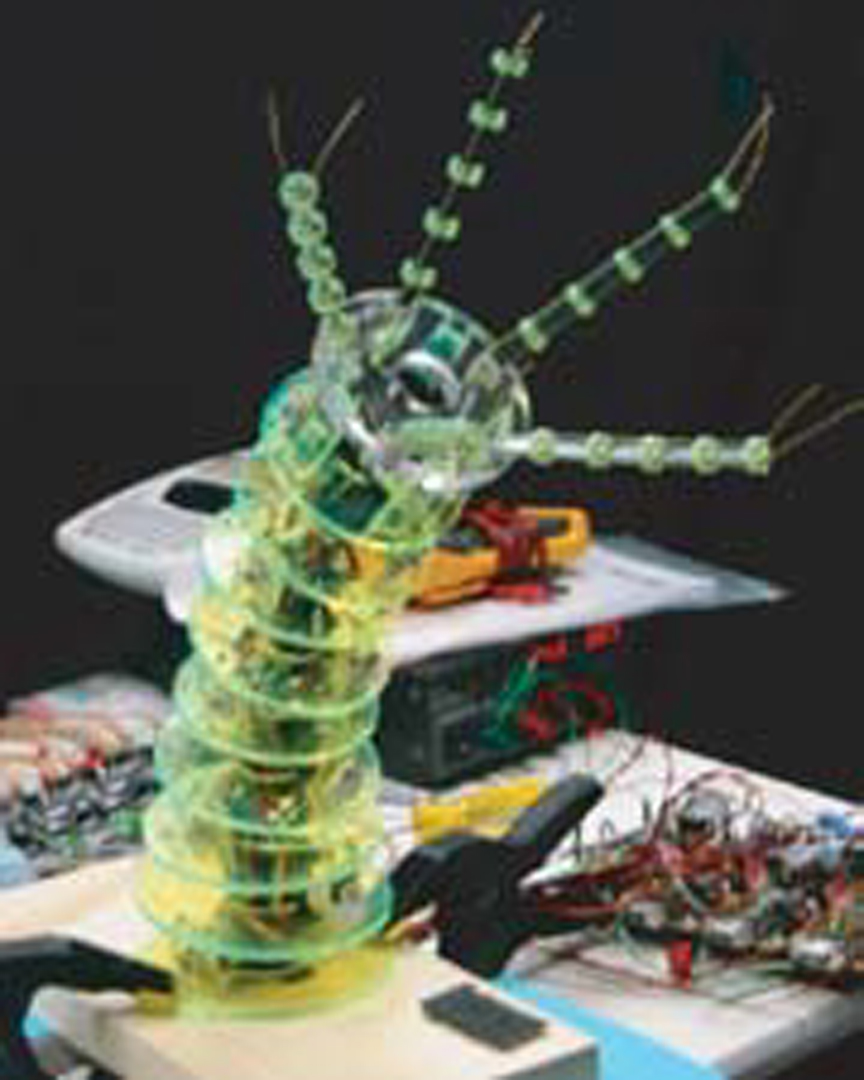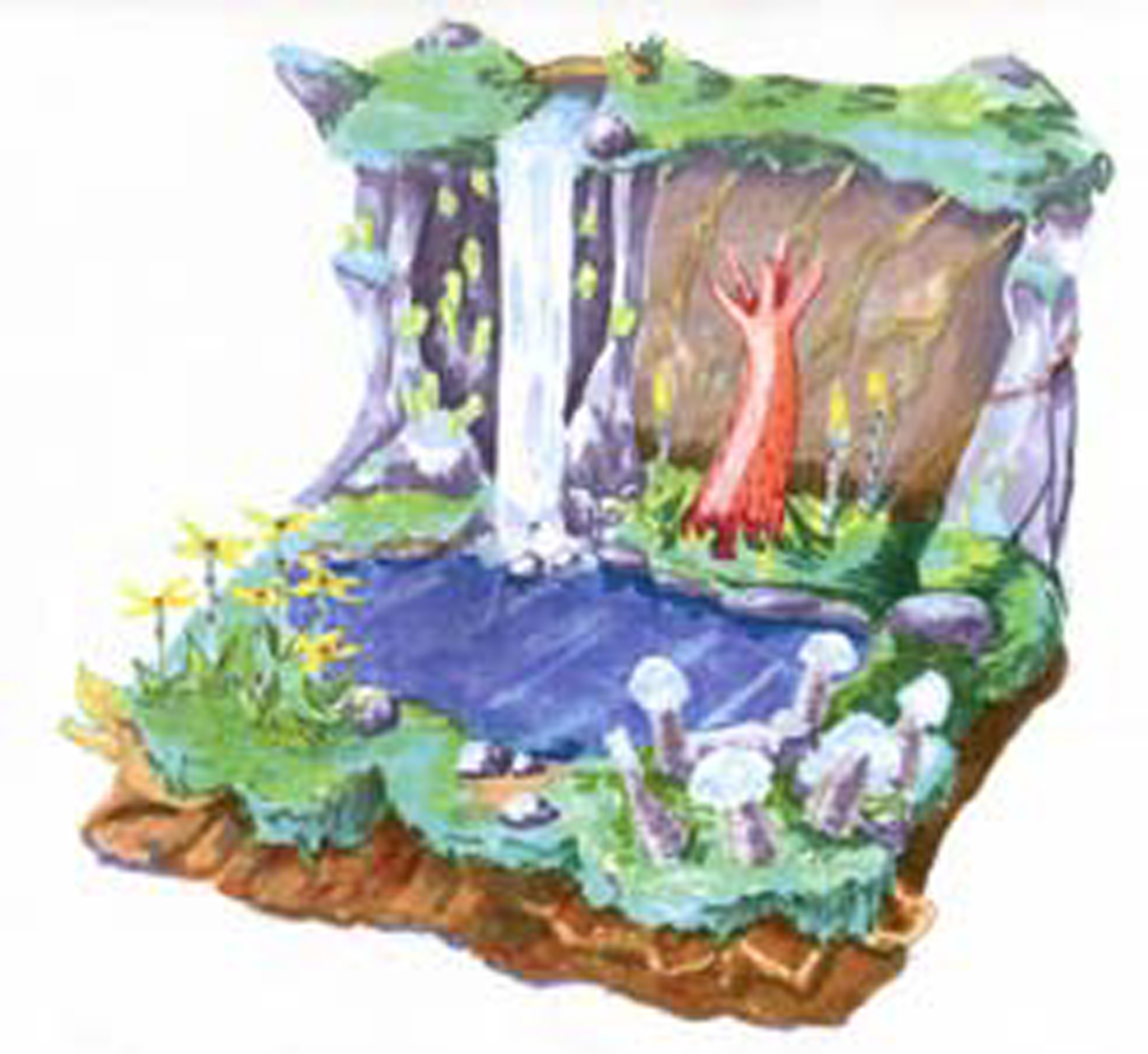“Public Anemone: An Organic Robot Creature” by Breazeal, Brooks, Hancher, Kidd, McBean, et al. …
Notice: Pod Template PHP code has been deprecated, please use WP Templates instead of embedding PHP. has been deprecated since Pods version 2.3 with no alternative available. in /data/siggraph/websites/history/wp-content/plugins/pods/includes/general.php on line 518
Conference:
- SIGGRAPH 2002
-
More from SIGGRAPH 2002:
Notice: Array to string conversion in /data/siggraph/websites/history/wp-content/plugins/siggraph-archive-plugin/src/next_previous/source.php on line 345

Notice: Array to string conversion in /data/siggraph/websites/history/wp-content/plugins/siggraph-archive-plugin/src/next_previous/source.php on line 345

Type(s):
E-Tech Type(s):
- Robotics
Entry Number: 76
Title:
- Public Anemone: An Organic Robot Creature
Presenter(s):
Description:
Abstract
We have created an articulated robotic creature and situated it within an interactive terrarium to explore the aesthetic, expressive, and interactive qualities that give robots an organic and engaging presence to people.
1 The Motivation and Concept
Newly emerging robotic applications in the areas of entertainment, education, domestic assistants, etc. motivate the development of autonomous robots that can interact with people. Autonomous robots today (such as Sony’s robot dog Aibo or Honda’s humanoid robot Asimo) are hard-shelled, minimally expressive, and extremely limited in their ability to directly engage people. However, for people to welcome such robots into their daily lives, future robots must not only be proficient but also rewarding with which to interact. This project explores those aesthetic, behavioral, and interactive qualities that give a robot a life-like presence to people. Particular emphasis is placed on giving the robot organic qualities and making it highly expressive as advocated by Thomas and Johnson’s The Illusion of Life.
2 The Installation
To pursue these questions, we have taken primitive life as a metaphor. As such, we are building a robotic creature that is an intriguing blend of plant and animal. The robot is covered in a soft silicone skin and has a highly flexible body with sensate tentacles (see figure 1). The robot is situated in a 4 ft. by 5 ft. interactive terrarium that simulates the creature’s “alien home world” with a day-to-night cycle of ten minutes. During the day while the robot creature is awake, the robot behaves as an autonomous creature, playfully engaging people about the exhibit as they try to interact with it as one might a terrarium pet. Using color cameras mounted within the terrarium, it visually perceives people via an assortment of features (motion, skin tone, color, depth, etc.). It responds to people’s gestures by orienting towards them, and smoothly tracking their movement. Particular care is paid to responding in a highly expressive manner and exhibiting a range of emotive responses such as a fear response if people are creating too much commotion about the creature. During the night cycle, the creature sleeps while other smaller, nocturnal creatures of the alien world awaken. Visitors interact with these simple robotic creatures through touch and proximity, causing them to respond though sound, light, and movement. These “nocturnal” interactions are managed by the show controls system, which models the terrarium as an intelligent stage.
3 Technological Innovations
Creating an interactive robot with organic qualities poses some interesting artistic and technological challenges. One critical aspect of giving a robot a life-like presence is designing it to move in a graceful, highly flexible, and articulated manner without sacrificing control accuracy and precision. The robot must move in both an expressive as well as a target-directed manner, so we are combining traditional robotic feedback control techniques with tools for scripting animations (e.g., telemetry for motion capture or animating a 3D graphical model of the robot) to ground hand-crafted animations with real-world physics. A visual system allows the robot to perceive people near the terrarium, and sensate tentacles allow it to feel its way about its environment. Based on our previous work with building sociable humanoid robots [Breazeal 2002], and building upon the code base of the Synthetic Characters Group [Burke et al. 2001] for interactive characters, these elements are tied together with a software architecture that integrates real-time perception, motivation, task-based behavior, and expressive movement.
4 The Team
The Robotics Presence Group at the MIT Media Lab is composed of specialists in artificial intelligence, sociable humanoid robotics, mechanical design, electrical engineering, machine perception, animatronic special effects, and human computer interaction.
Other Information:
References
BREAZEAL, C. 2002. Designing Sociable Robots. The MIT Press.
BURKE, R., ISLA, D., DOWNIE, M., IVANOV, Y., AND BLUMBERG,
B. 2001. Creature smarts: The art and architecture of a
virtual brain. In Proceedings of the Game Developers Conference,
147–166.







